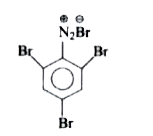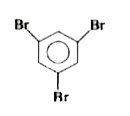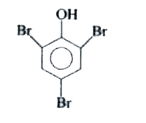The end product of oxidative phosphorylation is
NADH
Oxygen
ADP
ATP+H2O
The correct Answer is:d
Step-by-Step Solution:
1. Understanding Oxidative Phosphorylation:
- Oxidative phosphorylation is a metabolic pathway that occurs in the mitochondria of cells. It involves the oxidation of metabolites and the production of ATP.
2. Role of Electron Donors:
- The process starts with electron donors such as NADH and FADH2. These molecules donate electrons to the electron transport chain.
3. Electron Transfer:
- The electrons are transferred through a series of proteins in the electron transport chain. This transfer releases energy, which is used to pump protons (H+) across the mitochondrial membrane.
4. Proton Pumping:
- The pumping of protons creates a proton gradient across the membrane. This gradient is essential for ATP synthesis.
5. Splitting of Oxygen:
- At the end of the electron transport chain, oxygen acts as the final electron acceptor. It combines with the electrons and protons to form water.
6. Formation of ATP:
- The energy stored in the proton gradient is used by ATP synthase to convert ADP and inorganic phosphate (Pi) into ATP.
7. End Products:
- The main end products of oxidative phosphorylation are ATP and water.
Final Answer: The end products of oxidative phosphorylation are ATP and water.
---
- Oxidative phosphorylation is a metabolic pathway that occurs in the mitochondria of cells. It involves the oxidation of metabolites and the production of ATP.
- The process starts with electron donors such as NADH and FADH2. These molecules donate electrons to the electron transport chain.
- The electrons are transferred through a series of proteins in the electron transport chain. This transfer releases energy, which is used to pump protons (H+) across the mitochondrial membrane.
- The pumping of protons creates a proton gradient across the membrane. This gradient is essential for ATP synthesis.
- At the end of the electron transport chain, oxygen acts as the final electron acceptor. It combines with the electrons and protons to form water.
- The energy stored in the proton gradient is used by ATP synthase to convert ADP and inorganic phosphate (Pi) into ATP.
- The main end products of oxidative phosphorylation are ATP and water.
Topper's Solved these Questions
- BOOK - NCERT FINGERTPS ENGLISHCHAPTER - RESPIRATION IN PLANTSEXERCISE - Assertion & Reason15videos
RESPIRATION IN PLANTS
- BOOK - NCERT FINGERTPS ENGLISHCHAPTER - RESPIRATION IN PLANTSEXERCISE - Respiration In Plants130videos
RESPIRATION IN PLANTS
- BOOK - NCERT FINGERTPS ENGLISHCHAPTER - RESPIRATION IN PLANTSEXERCISE - HOTS7videos
RESPIRATION IN PLANTS
- BOOK - NCERT FINGERTPS ENGLISHCHAPTER - PLANT KINGDOMEXERCISE - Plant Kingdom160videos
PLANT KINGDOM
- BOOK - NCERT FINGERTPS ENGLISHCHAPTER - STRUCTURAL ORGANISATION IN ANIMALSEXERCISE - Structural Organisation In Animals129videos
STRUCTURAL ORGANISATION IN ANIMALS
Similar Questions
Knowledge Check
- Question 1 - Select One

The end product Y is :A B
B C
C D
D
Oxidative phosphorylation is done by
View SolutionOxidative phosphorylation refers to
View SolutionThe process of oxidative phosphorylation takes place in
View SolutionWhat is oxidative phosphorylation?
View SolutionWhat is oxidative phosphorylation?
View SolutionWhat is oxidative phosphorylation?
View SolutionWhat is oxidative phosphorylation?
View Solution


